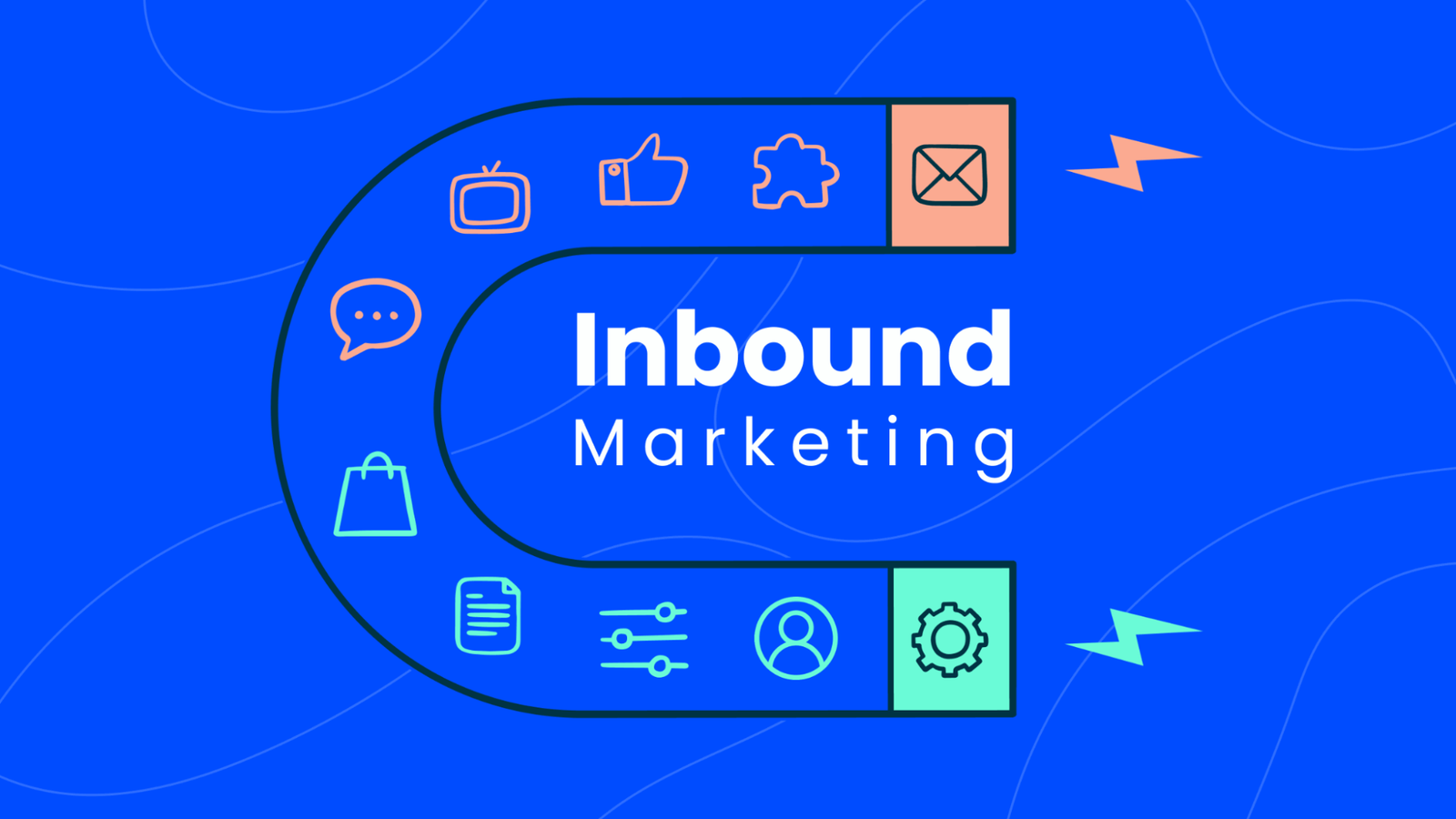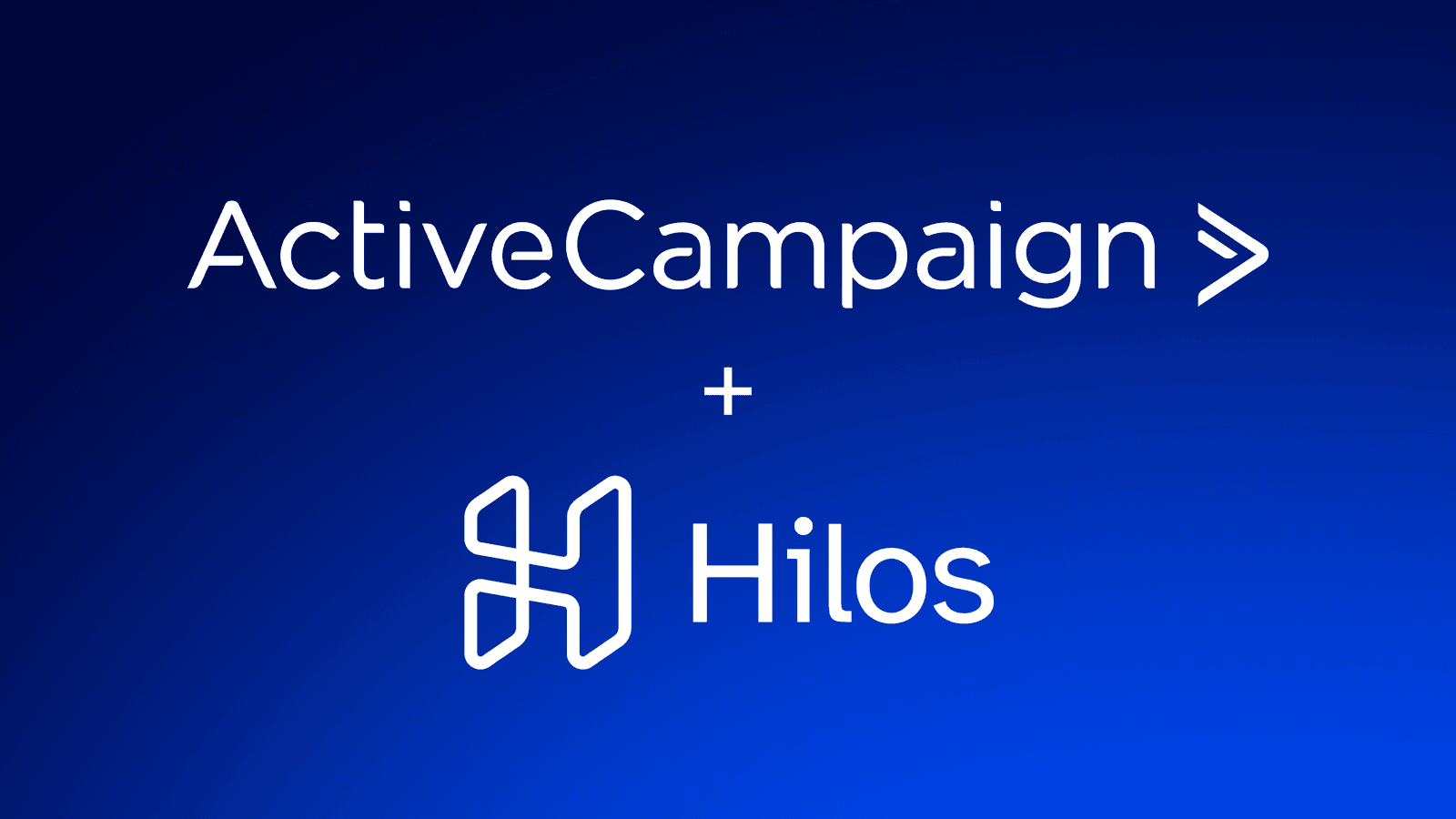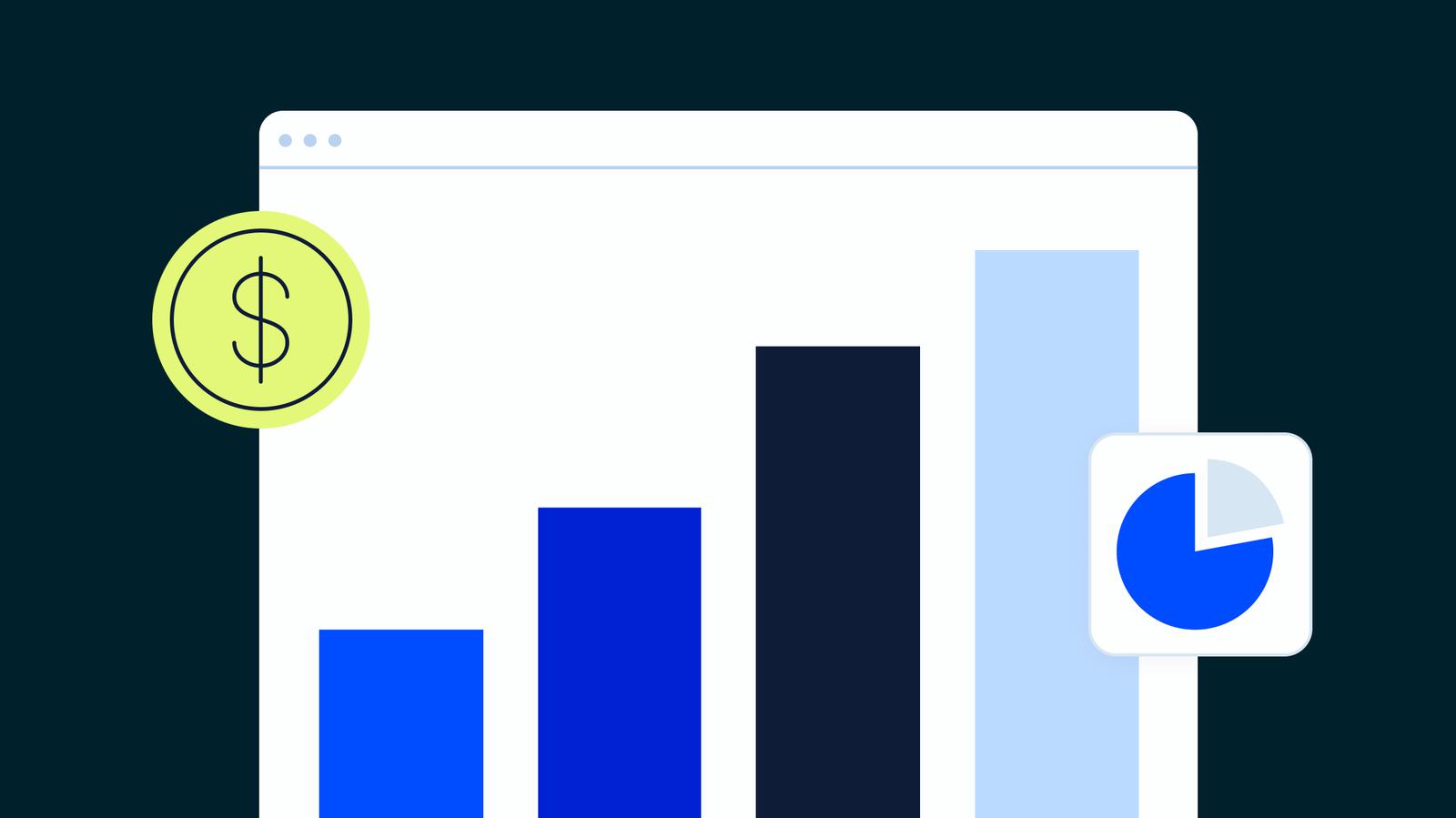Picture this:
You arrive at work, fire up your laptop, check your CRM, and bam—a bunch of new prospective customers are just waiting to be sold to.
It sounds like every marketer’s fantasy, right?
It also sounds like what many claim inbound marketing offers. But is it realistic? And if it is, what do you need to line up to achieve it?
We’ll answer this question in this article before diving into 7 powerful inbound marketing tactics to integrate into your strategy today.
What is inbound marketing?
Inbound marketing is a marketing approach that focuses on attracting leads (potential customers) to your company.
Inbound marketers use a variety of tactics to achieve this goal, including:
- Search engine optimization (SEO)
- Email newsletters
- Content pieces, like blogs, webinars, and ebooks
- Influencer marketing
- Social media presence growth
Whatever tactics you use, the idea is that you’re not outwardly pushing your message onto customers. You’re there when they need you, and you’ll show up when the timing is right.
SEO-focused blogs are a classic example of this. A potential customer is experiencing a problem, and they decide to search on Google for a solution.
They click through to your blog post (because you did such a great job with it that you’re on page 1 for that search phrase), which helps them solve their problem. While there, they learn about your brand. This is the first stage of inbound marketing, which we call the “Attract” stage.
But we’re getting ahead of ourselves.
To understand what inbound marketing is, it’s helpful to look briefly at its counterpart, outbound marketing.
Inbound marketing vs. outbound marketing: What’s the difference?
While inbound marketing seeks to attract prospects to your company, outbound marketing pushes messages outward.
For this reason, it’s often referred to as interruption marketing.
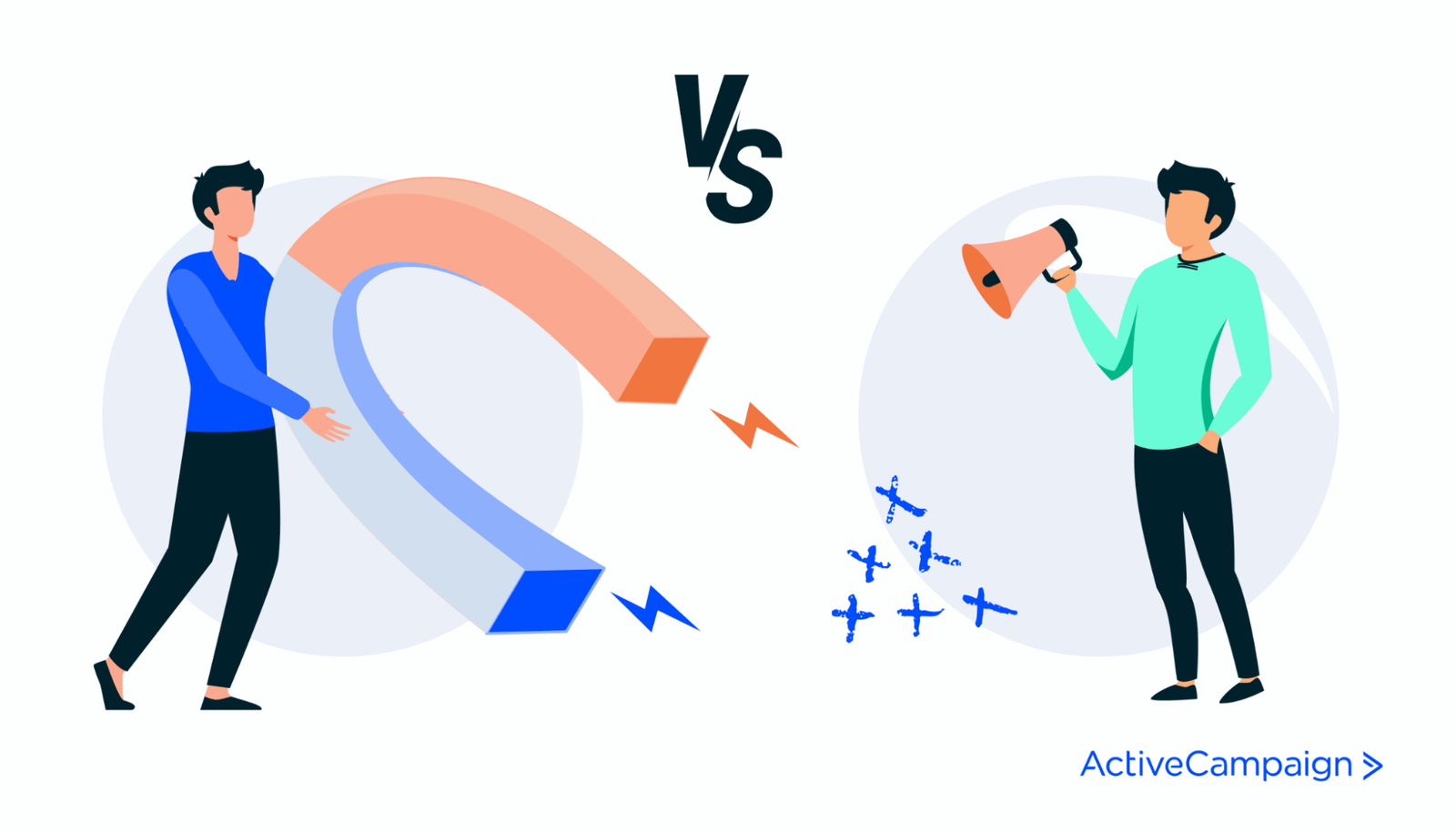
Ads are a classic example of outbound marketing. They can take many forms, including:
- Digital display ads
- Search advertising (like Google Ads)
- Physical ads, such as billboards, wallscapes, and bus ads
- Sponsored posts on social media platforms
In the case of all of the above, there is no consent. That is, the user isn’t asking to see the message.
That’s really the primary difference between inbound and outbound marketing.
Inbound marketing utilizes user-driven channels. Customers get to choose when and how they engage with your brand. Outbound is brand-driven. You control what prospects see and when and where they see it.
Both have their pros and cons.
Inbound is generally more customer-friendly and is typically better suited to modern buyers’ journeys.
However, the biggest drawback with inbound marketing is that it can take some time to get your inbound channels firing on all cylinders. It’s a longer-term play with organic growth built, meaning you invest upfront and profit down the line.
Outbound is, as we said, interruptive, so it’s not quite as smooth from the customer’s perspective (though, to be honest, we’re all pretty used to seeing ads everywhere these days).
The major benefit here is that outbound tactics, like Google Ads, start generating results immediately (though we shouldn’t discount the fact that some optimization and testing are required to really nail your outbound tactics).
Okay, let’s get back to inbound marketing and explore the 3 stages of the inbound marketing funnel.
The 3 stages of the inbound marketing funnel
The typical inbound marketing funnel is visualized with 3 stages:
- Attract
- Engage
- Convert
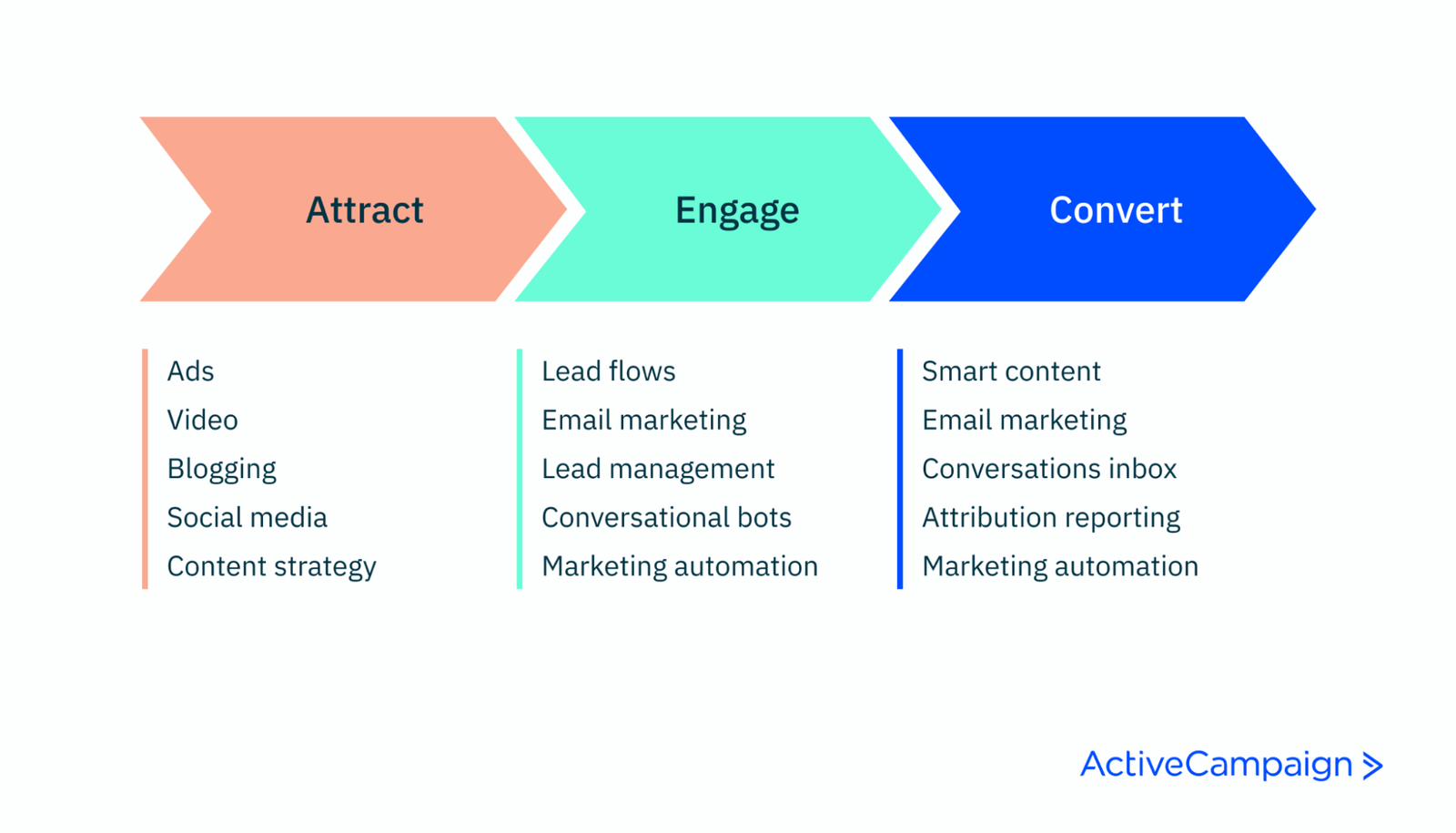
We say “visualized” because this is a model made up by inbound marketers to approximate how the tactics they use influence the customer journey and how potential buyers interact with the touchpoints they put in place.
In reality, customers don’t always move through this journey linearly. They might jump into the funnel from an ad, get right through to conversion-focused email marketing activities, and then loop back to attract phase content if they don’t feel their problem has been adequately solved.
In any case, attract, engage, convert is a good model for understanding the general path customers take to conversion.
Attract
The attract stage of the inbound marketing funnel is where customers first become familiar with your brand.
Common inbound tactics at this stage include:
- Problem-focused video content
- Organic social media content
- Blog posts
Your goal here is to capture customers’ attention by discussing solutions to problems they have. These problems will lead them to you as they search for fixes and come across your content on the topic.
Once you have them hooked, you go through to the engage step.
Engage
At the engage phase of the inbound marketing funnel, you have the customer’s attention, and you’re beginning to push them toward a potential solution.
You’re not exactly selling your product as yet, though you are starting to talk with more of a focus on the category your product sits in.
That is, rather than discussing the impacts of a given challenge as you do in attract-oriented content, you’re recommending a specific solution—one your product offers.
Once the customer is convinced that your product category is the right solution for them, they will start assessing their options (that is, you and your competitors).
This is when you move to conversion-focused content.
Convert
Customers at this funnel stage are looking to make a final decision.
They’ve decided that a given product or service is the right solution for their problem, and you’re 1 of the service providers they’re considering working with to solve it.
At this point, you should focus on explaining what differentiates your solution, how it’s better than the alternatives, and the additional benefits customers can expect to see should they choose your product or service.
Inbound marketing approaches: 7 tactics to include in your strategy
Ready to take your inbound marketing strategy to the next level?
Learn these 7 powerful inbound marketing tactics, and implement those that make the most sense for your business goals.

Let’s dive in.
1. Invest in the long-term with SEO-driven content
SEO is a classic inbound marketing tactic.
For those unfamiliar with the term, SEO is the process of optimizing web pages like blogs and landing pages to show up on Google and other search engines (learn more about it here).
The idea is that your page shows up if a customer searches for a given keyword. You then help the customer solve a query, and they learn about your brand as a result.
Let’s say someone is having an issue with emails bouncing back to them. They open Google and search for “emails sent to me are bouncing back.”
Here’s what they see:
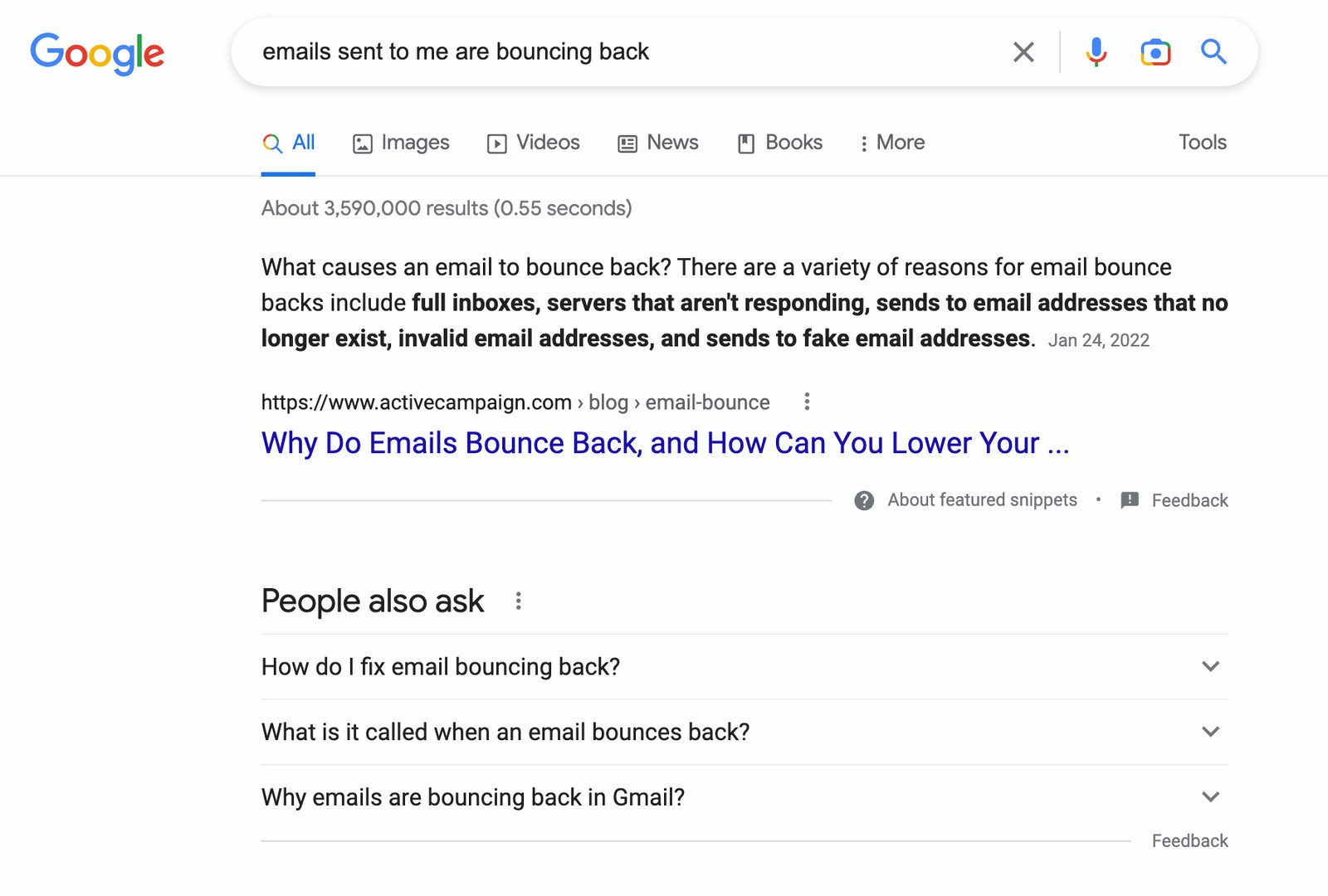
Most searchers will click on that top result and land on our blog post on emails bouncing.
This is the attract stage content. The idea is simply to attract traffic to our website and help customers solve their challenges.
At the end, we’ll try to capture an email address to move that prospect into the engage phase and send them valuable email content.

It’s worth noting that SEO is a long-term play.
You’re not going to publish a page on day 1 and rank for the desired key phrase on day 2. Yes, you may start seeing some results in a matter of months or even weeks, but keep the longer term (1 to 2 years) in mind when considering the success of this tactic.
Additionally, remember that SEO is an organic play. That is, you’re paying upfront to produce and publish content with the intention of ranking down the track.
Once you’ve got pages ranking, however, there’s little additional cost required (you don’t have to keep writing that blog post, for instance). This makes SEO a powerful inbound marketing tactic for long-term sustainability.
Learn more about creating a long-term SEO strategy here: How to Create a Long-Term SEO Strategy.
2. Build lead nurture email sequences to develop relationships
A solid example of an inbound marketing tactic designed to cater to engage stage audiences is the lead nurture email sequence.
Here, you create an email sequence that educates readers on a given challenge, helps them solve it, and ultimately moves them toward a specific goal (for example, a free trial sign-up).
Check out this example from Gabi:

This is just 1 email in a series designed to help customers save on their insurance. The main CTA gives away Gabi’s goal: getting users to run through a rate comparison.
For Gabi, that’s likely the trigger that moves a prospect to the convert stage, as a sales rep can then jump in and close the deal based on the data they’ve provided to access the insurance rate comparison.
Lead nurture email sequences can be time-consuming to set up, but they are highly repeatable (and automatable) once you’ve designed the email content itself.
Give yourself a headstart with 1 of our free lead nurturing email templates.
3. Focus on building an organic social media audience
Social media marketing can fall in either the inbound or outbound camp, depending on how you use it.
If you’re running ads (that is, non-consensual content), then you’re doing outbound. But if you’re growing an organic audience of followers and holding a conversation directly with them (so, consensually), then you’re doing inbound.
This is a great example of where outbound can support, rather than hinder, an inbound marketing approach. You might sponsor certain posts to expand your reach and attract new followers, which you can market to later organically.
When communicating with your audience on whatever platform you’re using, be careful not to overdo it with the selling. They’re not following you to get pitched to—they can find all that “salesy” stuff on your website.
The best move here is to be as relatable as possible and comment on industry-related trends and observations.
Toggl Hire keeps it real with a meme-based approach to their LinkedIn feed, for example.

Of course, you can also weave in the occasional video-based social media post to show how your product might be used to solve a common challenge.

The idea here is to keep the approach focused on solving problems rather than saying, “Hey, buy our thing.”
You’ll need to know how to monitor and measure success to get the most out of your social media efforts. Learn more about this process in our guide, How to Measure Social Media Marketing Performance.
4. Use proprietary research to drive backlinks
Every SEO expert and their dog wants more backlinks (links from other websites that drive traffic to yours). Unfortunately, many use tactics to gain them that are, shall we say, not ideal. Some even resort to a quick fix and attempt to purchase backlinks, which is far from the best practice.
The best long-term strategy for gaining more backlinks is creating the best-quality content. I mean, that’s the point, and it’s why links back to your domain are a ranking factor for Google’s search bots.
One powerful tactic for doing this is to engage in a proprietary research project and then publish your findings in a full-scale report.
If the report is valuable and has interesting insights and statistics, it will garner backlinks from those using your findings as reference material in their content.
For example, the advertising measurement and optimization platform VideoAmp created a report on video ad measurement.
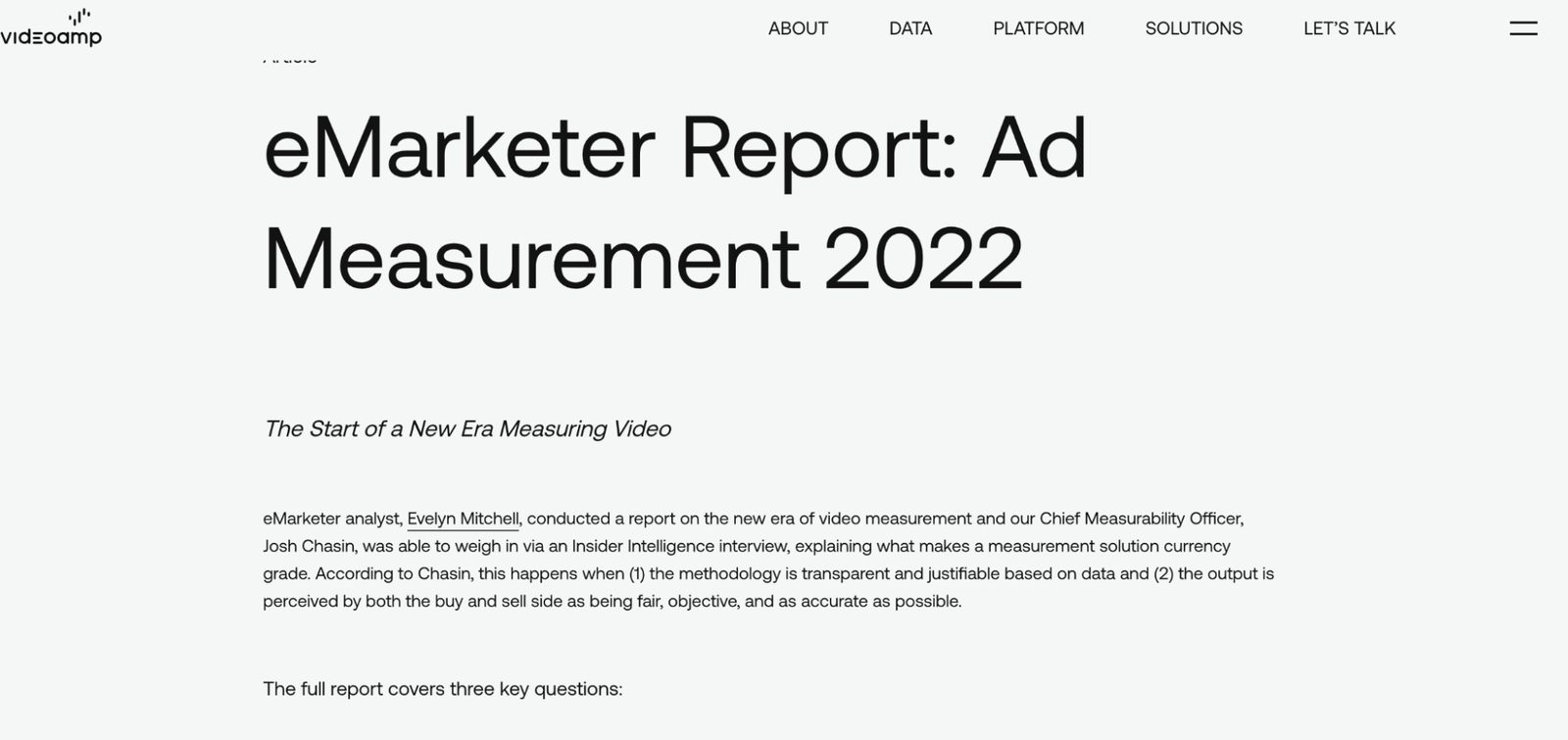
The report has generated over 10,000 backlinks so far, with high-authority sites like AdAge and even Google driving traffic to VideoAmp’s site.
5. Ensure lead generation-focused content is highly valuable
The focus for many inbound marketers is lead generation.
Essentially, their goal is to reach as broad an audience as possible, provide them value upfront, and convince those prospects to hand over their contact details (generally an email address) in exchange for more value.
From there, it’s a largely automated process of nurturing, lead scoring and collaborating with the sales team.
The key to designing a great lead capture device is a great offer. What you’re offering in exchange for that prospect’s email address has to be incredibly valuable—beyond what they’ve already received from you for free.
When considering a lead gen offer, ask, “Can this person find this same information elsewhere on the internet for free?” If the answer is yes, then your offer probably isn’t compelling enough.
Common examples of lead generation devices include:
- Ebooks
- Guides
- Free tools
- Checklists
- Webinars
- Reports
- Whitepapers
Basically, a downloadable piece of content.
Here’s a great example of what not to do:
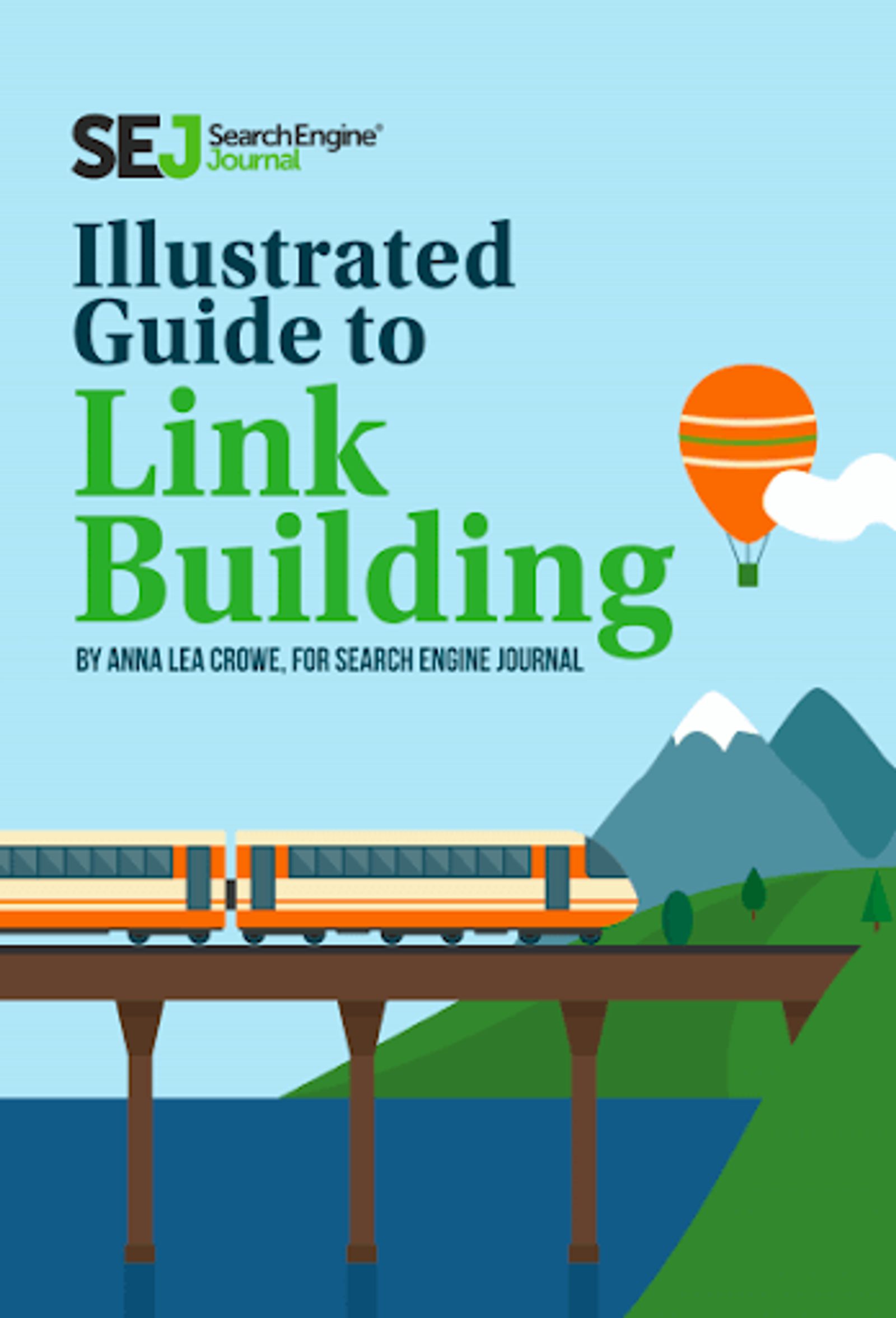
A quick site search yields a ton of results from the Search Engine Journal on the topic of link building.

It’s highly likely that the information in this ebook is just repurposed blog posts, which readers can access online without handing over their contact details.
Consider something more fine-tuned, like SEJ’s partnership with ContentKing.

This webinar offer drives home the urgency (“before it’s too late”) and leverages the authority of another brand in a similar market (ContentKing) to deliver an incredible value offer to prospective customers.
Master lead generation with our 101 Guide to Generating Sales Leads.
6. Get involved in a relevant social media group
Another great way to use social media to drive inbound marketing strategies is to engage in relevant existing groups.
This is a powerful way to drive conversation, support your audience, and solve their problems while improving brand awareness and positioning your company as an industry expert.
Some brands take this approach to the next level and build their own communities.
The Daily Carnage, for instance, is a great way for digital agency Carney to engage with potential customers (marketing leaders) in a non-confrontational, non-sales manner.
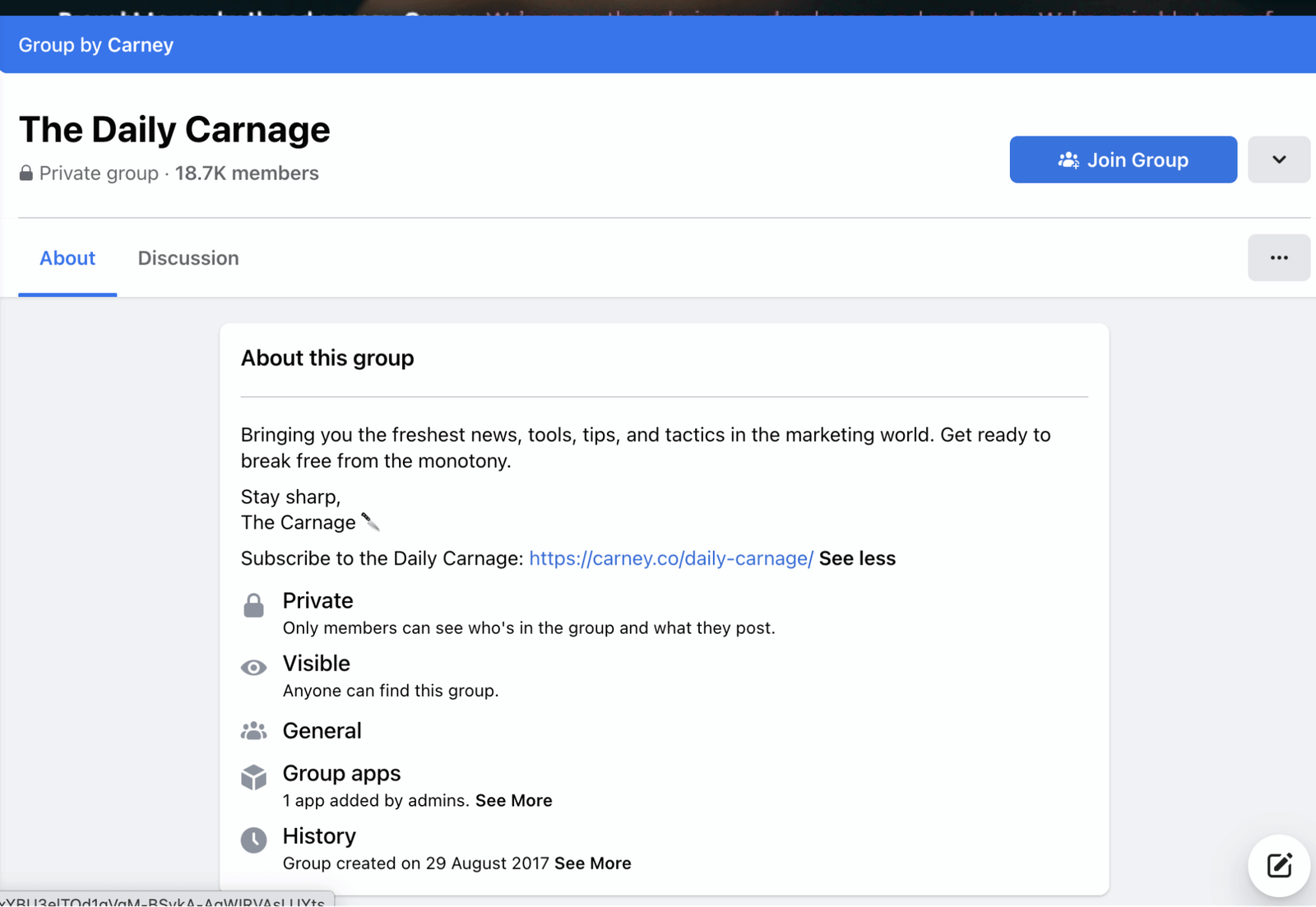
7. Use influencer marketing to expand your reach
Yes, influencer marketing gets a bit of a bad rap from some crowds, but it’s a valuable tactic for inbound marketers. This is especially true for B2C companies, where audiences are swayed more easily by the influence of well-known names.
When choosing an influencer to help you push your product, focus more on audience relevance than audience size.
An audience of 100 million followers means nothing if none of the people you’re marketing to have a use for your product.
This influencer campaign from Busbud is a great example of influencer marketing:
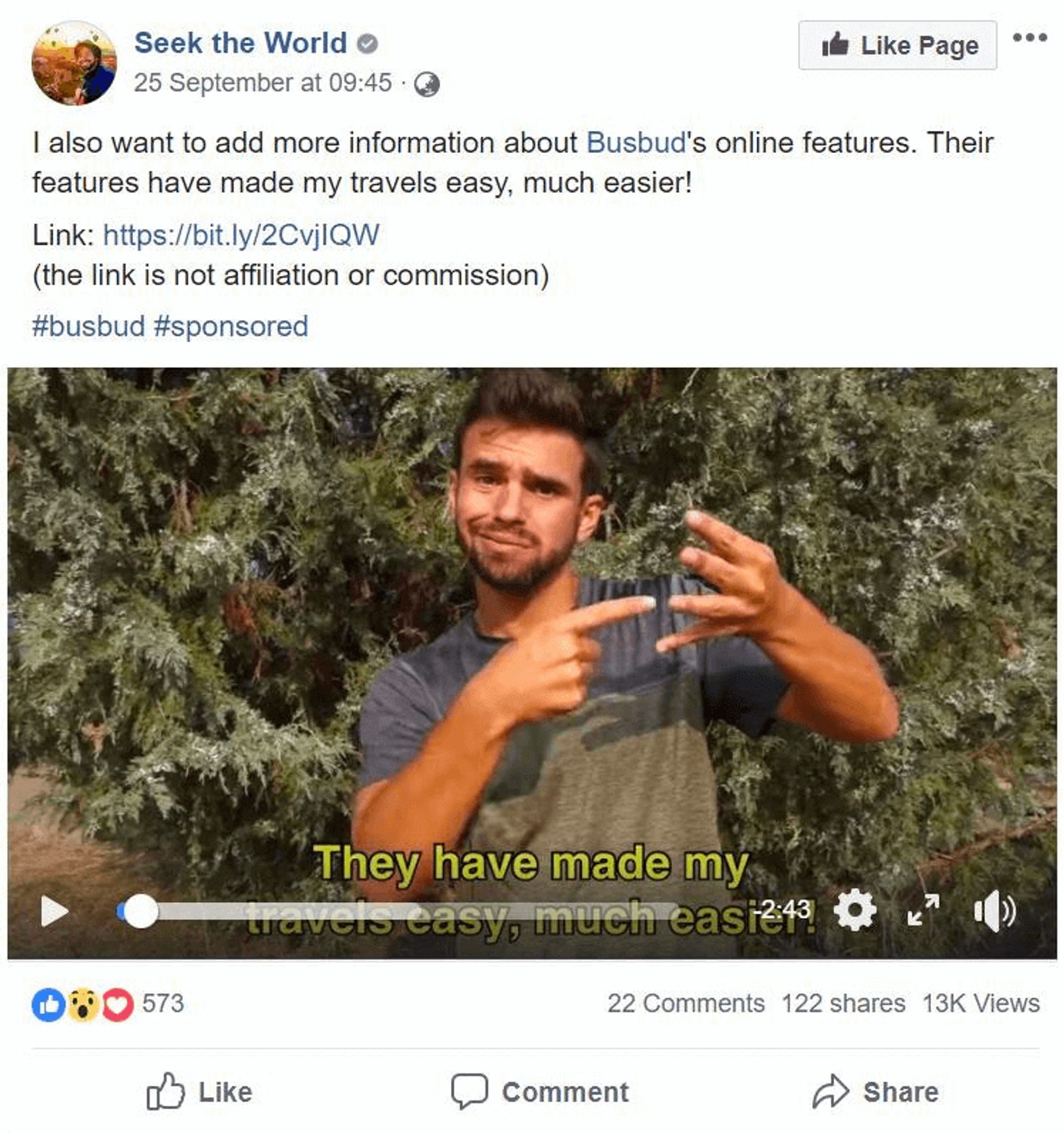
The influencer (Seek the World) has a large audience of travelers—exactly who Busbud is looking to attract.
Not sure how to get started with influencer marketing? We’ve got your back. Learn how our influencer marketing automation platform can help you capture online attention and turn engagement into revenue.
Track Your Inbound Marketing Efforts
Frequently asked questions
What are some examples of inbound marketing?
Some examples of inbound marketing tactics include:
- SEO blog content
- Video content, such as webinars and animated explainer videos
- Ebooks, guides, and whitepapers
- Opt-in email marketing campaigns
- Influencer marketing
- Social media marketing (excluding advertising and sponsored posts)
What are 3 types of inbound marketing?
The 3 most commonly used types of inbound marketing are:
- SEO
- Content
- Social media
What are inbound and outbound marketing examples?
Inbound marketing focuses on attracting prospects to your company using customer-led channels like SEO, content, and social media. Outbound marketing aims to push messages to potential customers through social media, display ads, and Google Ads.
Conclusion
Inbound marketing is a powerful marketing approach that, when led by a powerful strategy and measured and optimized carefully, can deliver incredible, long-term, organic results.
Of course, as things start heating up (because you’ve followed the advice in this guide), you’ll need a solid customer experience automation platform to manage all of those new leads and develop an immersive lead nurture sequence.
Try ActiveCampaign for free for 14 days and discover exactly how we can help you achieve your goals.

